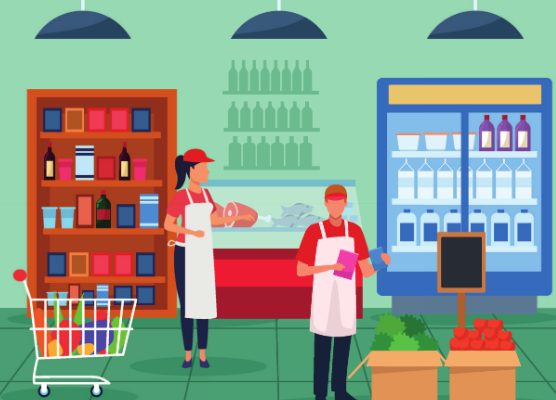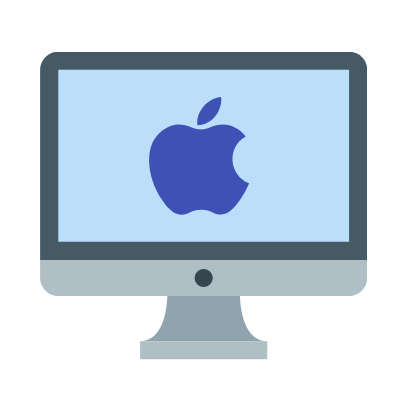Employee and customer safety during COVID-19: Who’s getting it right?
 While many businesses have struggled to adapt during the COVID-19 pandemic, some have managed to find ways to keep their business strong while prioritizing employee and customer safety. Each business is different with unique needs. However, some of these practices can serve as valuable guidelines for businesses trying to stay operational as the pandemic continues to worsen. So let’s take a look at two incredibly different businesses and what they’re doing right.
While many businesses have struggled to adapt during the COVID-19 pandemic, some have managed to find ways to keep their business strong while prioritizing employee and customer safety. Each business is different with unique needs. However, some of these practices can serve as valuable guidelines for businesses trying to stay operational as the pandemic continues to worsen. So let’s take a look at two incredibly different businesses and what they’re doing right.
Trader Joe’s resists COVID fatigue
Despite receiving some early criticism from employees on a lack of adequate safety measures, Trader Joe’s has become a leader on safety and enforcement among its peers. The company was quick to implement safety measures. In addition, it is one of few that has maintained strict measures, not succumbing to COVID fatigue.
Trader joes reported that only 2.4% of its workers tested positive for COVID-19 since the start of the pandemic. In addition, they claim that their store infection rates are typically lower than the average in the surrounding areas. Unfortunately, COVID infection data from comparable stores are almost non-existent. However, Trader Joe’s 2.4% number is considerably lower than the overall numbers nationally – with about 4.78% of the population having been infected. Still, it’s important to note that such comparisons are not 100% effective as there are many variables at play. Below are some measures the chain has taken to maintain employee and customer safety.
Key safety measures at Trader Joe’s stores:
- Mask mandate. While not all states have mask mandates in place, Trader Joe’s requires all shoppers, barring young children and those with medical conditions, to wear coverings while in stores.
- Providing PPE for crew members. Trader Joe’s provides staff with face masks and gloves. This avoids putting an additional burden on employees to acquire protective equipment and ensures employees can follow safety protocols. In addition, plexiglass barriers have been put up between cashiers and customers. Customers must stand in a clearly marked spot while cashiers bag groceries to ensure the barriers are effective.
- Altered hours. Stores have reduced hours, leaving more time to implement cleaning and safety measures. In addition, there are set hours for customers over 60 to provide added safety for high-risk groups.
- Additional paid sick leave. Crew members have been given an additional 2 weeks of paid sick leave to ensure they can stay home when feeling unwell. This is exceptionally important as the likelihood of federally mandated sick leave remains an unknown.
- Limited capacity. While many stores have claimed to be limiting store capacity, enforcement and follow through seem to vary. However, Trader Joe’s has been enforcing strict guest capacities since the beginning of the pandemic and hasn’t wavered, often leading to socially distanced lines outside the store. In fact, one Brooklyn resident created a Twitter account to update neighbors on the length of the line at a nearby Trader Joe’s.
- Social Distancing: With reduced store capacity, maintaining distance is easier than in most stores. However, proper distances are marked at checkout lines, where distancing is strictly enforced. In addition, cashiers ring up groceries — shoppers have a marked spot where they stand to help maintain distance from cashiers and other workers.
 Apple has continued to adapt as needed
Apple has continued to adapt as needed
Another widely popular brand, Apple has also taken strict and proactive measures in its stores to ensure safety. Apple’s stores are well-known hubs for fans of the brand. Back in the days before the pandemic, it wouldn’t be uncommon to see the stores packed in a way that would now make most shoppers cringe now. Apple’s brand is deeply invested in user experience – from an inviting storefront to employees who can help with your tech, give lessons, and more. Still, they’ve been able to adapt in a way that maintains their brand while taking into account employee and customer safety.
Key safety measures at Apple stores:
- Opening and closing stores as needed. Apple realizes that a one and done strategy during the pandemic doesn’t work. While they certainly want to keep as many stores open as possible, Apple has responded by opening and closing stores as needed based on the number of infections in a given area. In fact, there’s an entire website dedicated to tracking which Apple stores are open and closed. As you can see — many stores in the mid-west are currently closed as the pandemic surges there.
- Providing PPE. In traditional Apple fashion, they developed their own 3-layered surgical style mask to provide employees. In addition, Apple provides face coverings to any customers who shows up at a store without a mask. Providing masks to customers not only helps ensure employee and customer safety, but it also reduces the risk of conflict with customers who may show up without a mask but want service.
- Moving some activities online. Apple has increased its online support – creating virtual outlets for customers to access their support and sales staff. In addition, their in-store training sessions and creative workshops have moved to a virtual platform. This allows Apple to maintain the accessibility and support the brand is known for, while also prioritizing safety.
- Limiting capacity and in-store activities. While in some areas you can still get in-store support, much of that has moved to an appointment-only basis. Stores that are open do have limited capacity, and while some customers may have to wait in line – others who simply need to pick up orders can do-so at special pick-up areas out front or with curbside pickup at some locations.
How can you maintain employee and customer safety at your business?
The actions taken by these two businesses are not applicable to all companies – and businesses without the footprint of a large corporation may have less flexibility. With that in mind, however, there are many lessons to be learned about measures your business could take, that would work for you.
Mandating masks, altering hours, and limiting store capacity are measures all businesses can take easily. While some may not be able to afford increasing paid sick leave – it may be possible to work with employees to create more flexible schedules and have others help cover where necessary. In addition, consider what activities require employees to be on-site vs remote and what services offered to customers can be done remotely or with reduced contact. Each business will have to make its own choices and considerations when it comes to what makes sense for them, however, we can look to the measures other businesses have taken and successfully implemented as a good place to start.
Additional Resource: Read more on how to implement CDC COVID safety guidelines at your workplace.






